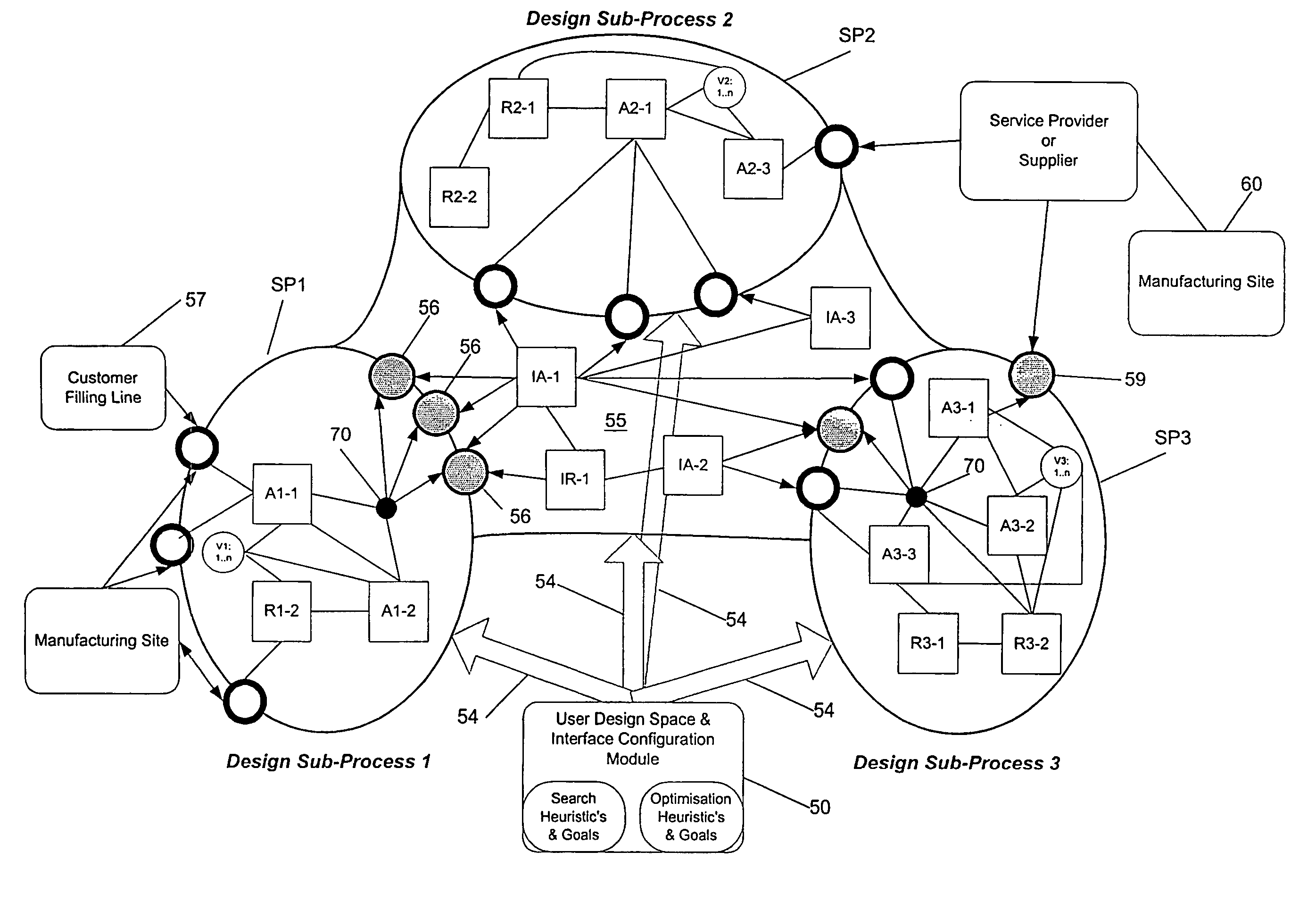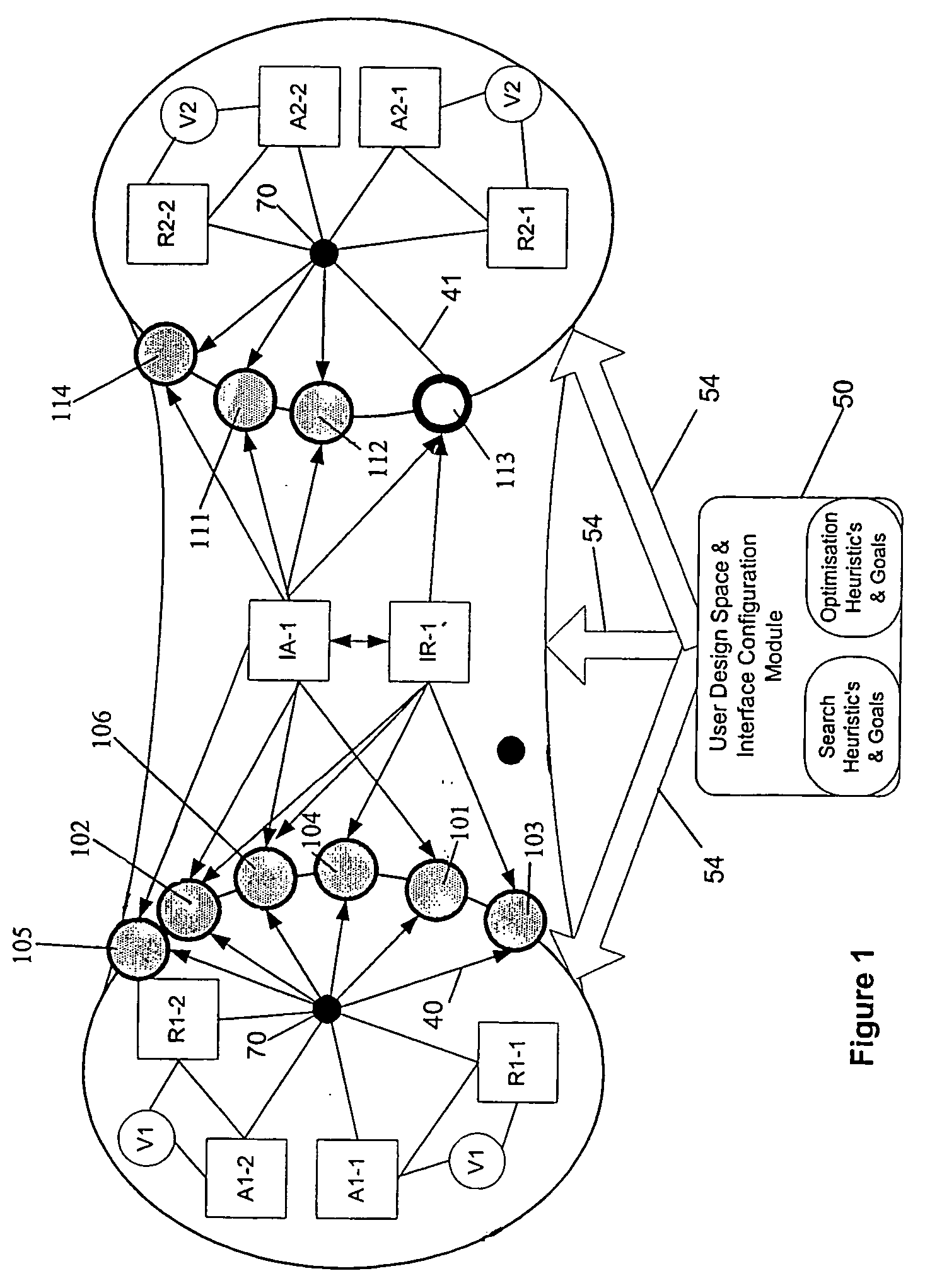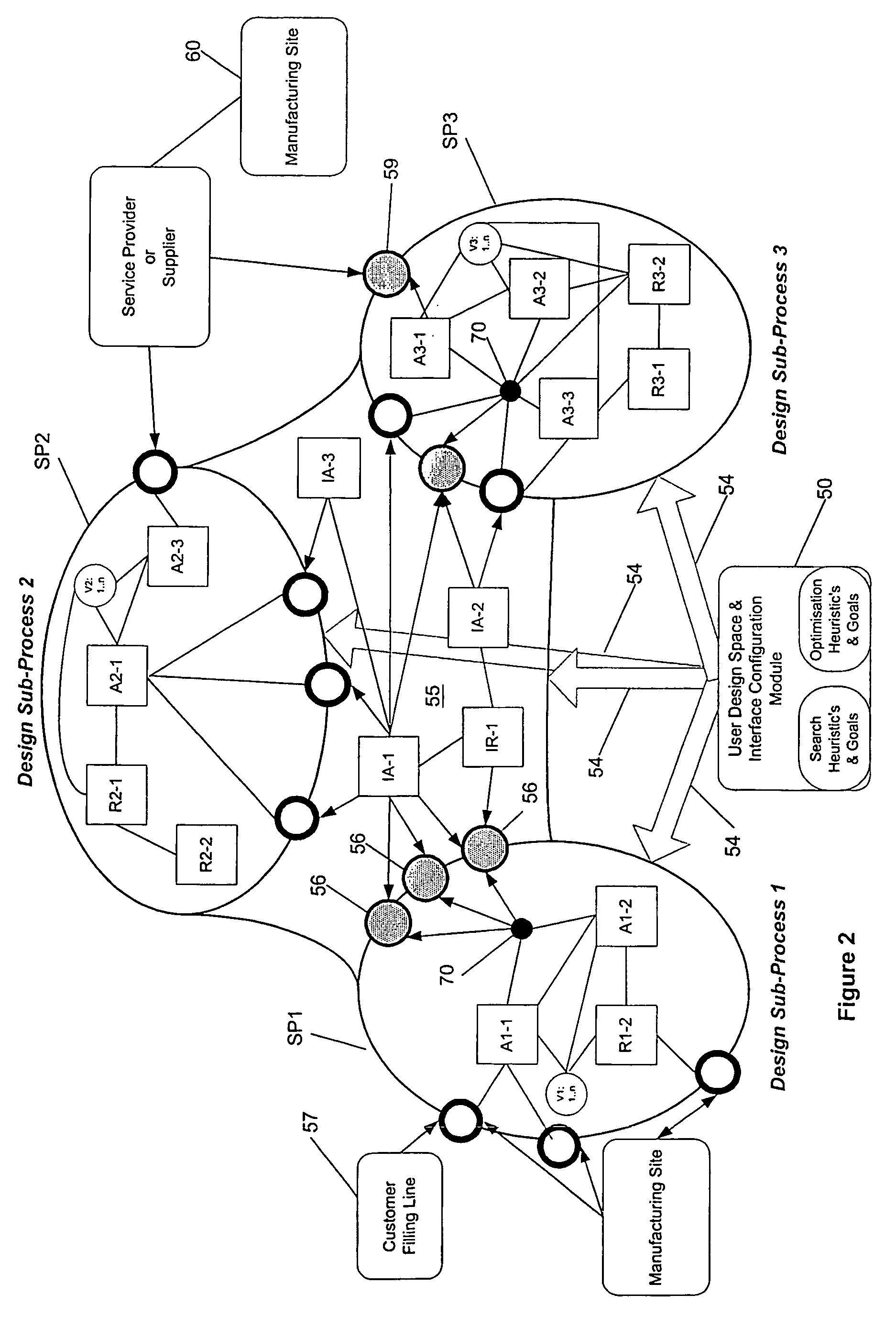System and method for controlling a design process
a technology of design process and system, applied in the field of system and method for controlling a design process, can solve the problems of limited intelligent and timely interaction between related design sub-processes, small guarantee, and often far from optimum design process
- Summary
- Abstract
- Description
- Claims
- Application Information
AI Technical Summary
Benefits of technology
Problems solved by technology
Method used
Image
Examples
example 1
[0054] In order to facilitate understanding of the invention, an example of an embodiment involving two sub-processes will be described where the first sub-process (SP1) is a carton and the second sub-process (SP2) is a corrugated box. FIG. 1 provides a schematic representation of the components in the system, eg variables, algorithms and rules. FIG. 1 shows the connection between variables, algorithms, and rules and the passive and active interface variables. In this example all algorithms and rules may modify or examine an interface variable. Accordingly, in FIG. 1, all lines are shown passing through a central hub 70 to indicate that all rules / algorithms may communicate with all variables. The directed lines (i.e. lines with arrows, e.g. line 40) show where a sub-process algorithm or rule may change an active variable. As shown within sub-process 2 where a passive variable cannot be changed by the algorithms and rules of the sub-process, non-directed lines (i.e. lines without arr...
example 2
[0088] Referring now to FIG. 2 there is shown a schematic representation of an interface between three sub-processes. The second example is for illustrative purposes of potential functions and does not relate to specific sub-processes. Box 50 indicates the user interface configuration module which is used by the project manager to configure the design process as indicated by arrows 54. In this embodiment the project manager is capable of configuring first design sub-process SP1, second design sub-process SP2 and third design sub-process SP3 as well as configuring interface 55.
[0089] As shown by design sub-process 1, a design sub-process may incorporate a number of different algorithms which interact with the variable set under the control or management of a rules engine R1-1. The set of variables 56 are all active and hence tend to drive the overall design process. However, the algorithms A1-1 and A1-2 also interact with other passive variables related by filling line 57 and manufa...
PUM
 Login to View More
Login to View More Abstract
Description
Claims
Application Information
 Login to View More
Login to View More - R&D
- Intellectual Property
- Life Sciences
- Materials
- Tech Scout
- Unparalleled Data Quality
- Higher Quality Content
- 60% Fewer Hallucinations
Browse by: Latest US Patents, China's latest patents, Technical Efficacy Thesaurus, Application Domain, Technology Topic, Popular Technical Reports.
© 2025 PatSnap. All rights reserved.Legal|Privacy policy|Modern Slavery Act Transparency Statement|Sitemap|About US| Contact US: help@patsnap.com



